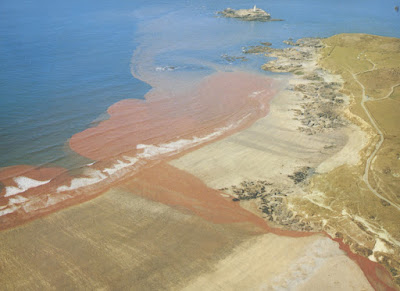Tuesday June 22nd
An interesting long day with presentations on areas crucial to the environment and the circular economy, acid mine drainage (AMD) and tailings.
Improved waste management practices are needed to ensure the long-term prevention of potential acid mine waters, limiting the access of oxidants to the sulfide-containing mineral being paramount to prevent the oxidation reactions that promote AMD, and Carolina Mafra, of University of Liege, Belgium, presented an integrated management strategy for AMD control of sulfidic tailings.
Dr. Thanos Kotsiopoulos, presented one of 4 papers from the University of Cape Town (UCT), and he highlighted that technologies to remove the long-term risks of large volume mine wastes remain limited. With the unrestricted access of oxidants, sulphide mineral degradation extends over prolonged time-frames which often leads to the formation of AMD. He showed that co-disposal of separated wastes presents a sustainable means to minimising risk by exploiting the complementary attributes of low sulphur fine waste tailings with acid generating waste discards.
Karolina Rybka, of the AGH University of Science and Technology, Poland, described Layered Double Hydroxides, mineral-like materials which, due to their layered structure containing weakly-bounded interlayer anions, are promising candidates for the removal of anionic forms from industrial wastewaters. In a further UCT paper, Dr. Tynas Marais showed how sulphate reducing and/or sulphide oxidising bacteria have been applied in the bioremediation of mine-impacted wastewater by exploiting their metabolic potential to transform sulphur species. Also from South Africa, Kerri Preez, showed how Mintek has developed cloSURE, a process for treatment of AMD which employs biological sulphate reduction
Standard assessment of acid and metalliferous drainage risks for mine waste is common practice in industry however general practice/guidance has to date focused on base metal/gold sulfide ores with less focus on unconventional “green technology” deposits which, contrary to the “green” classification, can generate wastes posing significant environmental risks from long term storage.
Key strategic resources like lithium, graphite and REE are critical for the advancement of so-called “green” technologies including Li-Ion batteries and high performance electromagnets. Whilst some recycling is possible, this market is relatively small as demand is far greater than supply. As such mining of these materials, and thus waste generation, will be required in the immediate future, and Julia Dent, of Mine Environmental Management, UK, outlined key geochemical risk factors for storage of “green” mine waste that require careful assessment and which, if not given due consideration, may pose a potential future threat to the ‘green’ credentials of minerals critical for technology advancement.
In a further UK presentation, Gareth Rogers, a QEMSCAN Specialist at CGG-Robertson, showed that bulk geochemical tests are commonly used for AMD prediction but the information gained is limited and recent studies have demonstrated the effectiveness of automated mineralogy for AMD prediction.
In the final presentation in this session, and as a prelude to the afternoon session, Robert Barthen, of Tampere University, Finland, gave a positive slant on AMD, showing that it can also serve as a viable source of metals, if its remediation can be combined with metal recovery. The challenge is effective separation of desired metals for further downstream processing. He described the development of a simple sorption/desorption process using waste digested activated sludge as sorbent to recover metals such as U from AMD containing more than 10 metals, including Fe, Mn, Ni, Cu, Th, V and U.
How tailings are disposed of, managed and utilised will be critical for Environmental and Social Governance, as well as the circular economy, and was the subject of the eight presentations in the afternoon session.
 |
| The legacy of mining in Cornwall pre-Environmental and Social Governance |
 |
| The area around Godrevy on the north Cornwall coast in 1982, contaminated with South Crofty tailings discharged into the appropriately named Red River |
The presentations showed how mine tailings can be viewed as secondary resources, although potential exists to valorise mine tailings to the circular economy as construction raw materials and mine backfill.
Serbia, for instance, has copper deposits which have been exploited since ancient times, and these operations have generated large amounts of mineral processing tailings. In the Bor Valley, approximately 27 Mt of tailings were disposed between 1933 and 1987 and Erdem Özdemir, of Metso Outotec, Finland described a project with the aim of zero waste extraction of valuable metals from the old Bor tailings containing copper and gold.
All the abstracts for the presentations are freely available on the conference website and the presentations are available on demand to registered delegates until the end of the year.











-EDIT.jpg)







No comments:
Post a Comment
If you have difficulty posting a comment, please email the comment to bwills@min-eng.com and I will submit on your behalf